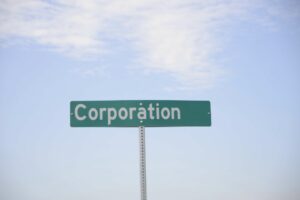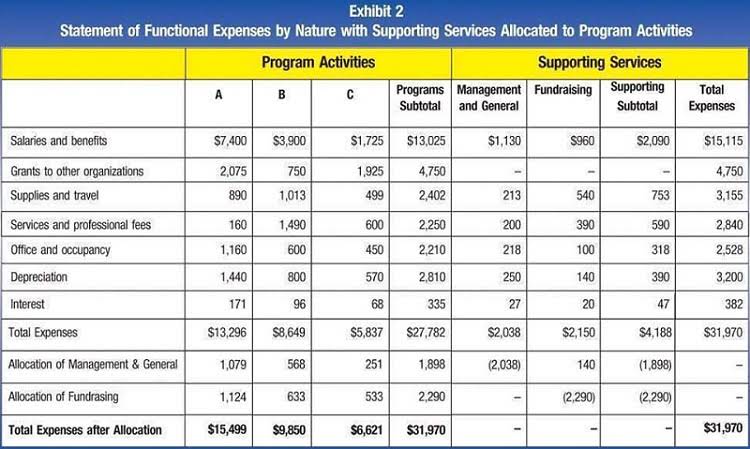At the date of declaration, the business now has a liability to the shareholders to be settled at a later date. 1As can be seen in this press release, the terms “stock dividend” and “stock split” have come to be virtually interchangeable to the public. Interestingly, stock splits have no reportable impact on financial statements but stock dividends do. As the company ABC owns 30% of shares of ownership, under the equity method, it needs to record 30% of XYZ’s net income which is $150,000 ($500,000 x 30%)as an increase in the stock investments. And at the same time, it also needs to record the dividend received of $18,000 ($60,000 x 30%) as a decrease in stock investments. In this case, the company needs to make the journal entry for the dividend received by debiting the cash account and crediting the stock investments account instead.
Note that dividends are distributed or paid only to shares of stock that are outstanding. Treasury shares are not outstanding, so no dividends are declared or distributed for these shares. Regardless of the type of dividend, the declaration always causes a decrease in the retained earnings account. For example, on December 18, 2020, the company ABC declares a 10% stock dividend on its 500,000 shares of common stock. Its common stock has a par value of $1 per share and a market price of $5 per share.
- Accountants must make a series of two journal entries to record the payout of these dividends each quarter.
- Dividend record date is the date that the company determines the ownership of stock with the shareholders’ record.
- Both small and large stock dividends occur when a company distributes additional shares of stock to existing stockholders.
- Similar to the cash dividend, the company may not have the stock dividends account.
- Anyone who buys the stock after the ex-dividend date is not entitled to the dividend payment.
In a 2-for-1 split, for example, the value per share typically will be reduced by half. As such, although the number of outstanding shares and the price change, the total market value https://www.wave-accounting.net/ remains constant. If you buy a candy bar for $1 and cut it in half, each half is now worth $0.50. The total value of the candy does not increase just because there are more pieces.
What is the Definition of Dividends Payable?
For each one hundred shares that a stockholder possesses, Red Company issues an additional 4 shares (4 percent of one hundred). Thus, four hundred new shares are conveyed to the ownership as a whole (4 percent of ten thousand) which raises the total number of outstanding shares to 10,400. While a company technically has no control over its common stock price, a stock’s market value is often affected by a stock split. When a split occurs, the market value per share is reduced to balance the increase in the number of outstanding shares.
How to account for cash dividends
Preferred stock dividends are often cumulative so that any dividends in arrears must be paid before a common stock distribution can be made. Stock dividends and stock splits are issued to reduce the market price of capital stock and keep potential investors interested in the possibility of acquiring ownership. A stock dividend is recorded as a reduction in retained earnings and an increase in contributed capital.
However, stock dividends have no immediate impact on the financial condition of either the company or its stockholders. There is no change in total assets, total liabilities, or total stockholders’ equity when a small stock dividend, a large stock dividend, or a stock split occurs. A stock split causes no change in any of the accounts within stockholders’ equity.
Shareholders are typically entitled to receive dividends in proportion to the number of shares they own. Dividend is usually declared by the board of directors before it is paid out. Hence, the company needs to account for dividends by making journal entries properly, especially when the declaration date and the payment date are in the different accounting periods. In this case, the company will just directly debit the retained earnings account in the entry of the stock dividend declared. By issuing a large quantity of new shares (sometimes two to five times as many shares as were outstanding), the price falls, often precipitously.
Dividends Payable is classified as a current liability on the balance sheet, since the expense represents declared payments to shareholders that are generally fulfilled within one year. To record the payment of a dividend, you would need to debit the Dividends Payable account and credit the Cash account. When the dividend is paid, the company’s obligation is extinguished, and the Cash account is decreased by the amount of the dividend. Dividend record date is the date that the company determines the ownership of stock with the shareholders’ record.
Similarly, shareholders who invest in companies are typically driven by two factors—a desire to earn income in the form of dividends and a desire to benefit from the growth in the value of their investment. The board of directors of companies understand the need to provide shareholders with a periodic return, and as a result, often declare dividends usually two times a year. For example, Woolworths Group Limited generally pays an interim dividend in April and a final dividend in September or October each year. When cash dividends are declared, if there is any preferred stock outstanding, the dividends have to be applied to the preferred stock first.
To illustrate, assume that the Hurley Corporation has one million shares of authorized common stock. To date, three hundred thousand of these shares have been issued but twenty thousand shares were recently bought back as treasury stock. After some deliberations, the board of directors has decided to distribute a $1.00 cash dividend on each share of common stock.
When dividends are distributed, they are stated as a per share amount and are paid only on fully issued shares. A traditional stock split occurs when a company’s board of directors issue new shares to existing shareholders in place of the old shares by increasing the number of shares and reducing the par value of each share. For example, in a 2-for-1 stock split, two shares of stock are distributed for each share held by a shareholder.
When a company declares a stock dividend, the par value of the shares increases by the amount of the dividend. The debit to the dividends account is not an expense, it is not included in the income statement, and does not affect the net income of the business. The balance on the dividends account is transferred to the retained earnings, it is a distribution of retained earnings to the shareholders not an expense. On the other hand, if the company owns between 20% to 50% shares of stock of another company, it needs to record the dividend received as a reduction of its stock investments on the balance sheet.
Balance Sheet
This is the date that dividend payments are prepared and sent to shareholders who owned shares on the date of record. The related journal entry is a fulfillment of the obligation established on the declaration date – 30th July; it reduces the Dividends Payable account (with a debit) and the Cash account (with a credit). When a dividend is declared by the board of directors, the company will credit dividends payable and debit an owner’s equity account called Dividends or perhaps Cash Dividends. This is the date that dividend payments are prepared and sent to shareholders who owned stock on the date of record. The related journal entry is a fulfillment of the obligation established on the declaration date; it reduces the Cash Dividends Payable account (with a debit) and the Cash account (with a credit). For example, on December 20, 2019, the board of directors of the company ABC declares to pay dividends of $0.50 per share on January 15, 2020, to the shareholders with the record date on December 31, 2019.
Some companies issue shares of stock as a dividend rather than cash or property. This often occurs when the company has insufficient cash but wants to keep its investors happy. When a company issues a stock dividend, it distributes travel agency accounting additional shares of stock to existing shareholders. These shareholders do not have to pay income taxes on stock dividends when they receive them; instead, they are taxed when the investor sells them in the future.
A stock split is much like a large stock dividend in that both are large enough to cause a change in the market price of the stock. Additionally, the split indicates that share value has been increasing, suggesting growth is likely to continue and result in further increase in demand and value. Companies often make the decision to split stock when the stock price has increased enough to be out of line with competitors, and the business wants to continue to offer shares at an attractive price for small investors. When a company issues cash and other property dividends it will reduce both a company’s overall assets as well as its retained earnings. You should be familiar with the different types of dividend distributions and how they should be recorded. When a dividend is later paid to shareholders, debit the Dividends Payable account and credit the Cash account, thereby reducing both cash and the offsetting liability.
This is due to the company needs to use the equity method where it records its share of the net income of the company it invests as its own income on the income statement. Hence, it already recognizes the income from the investments when the investee reports the net income. When a company declares a stock dividend, this does not become a liability; rather, it represents common stock the company will distribute to shareholders, so it’s reflected in stockholders’ equity.
Samsung Boasts a 50-to-1 Stock Split
From a practical perspective, shareholders return the old shares and receive two shares for each share they previously owned. The new shares have half the par value of the original shares, but now the shareholder owns twice as many. If a 5-for-1 split occurs, shareholders receive 5 new shares for each of the original shares they owned, and the new par value results in one-fifth of the original par value per share. Stock investors are typically driven by two factors—a desire to earn income in the form of dividends and a desire to benefit from the growth in the value of their investment. Members of a corporation’s board of directors understand the need to provide investors with a periodic return, and as a result, often declare dividends up to four times per year.




